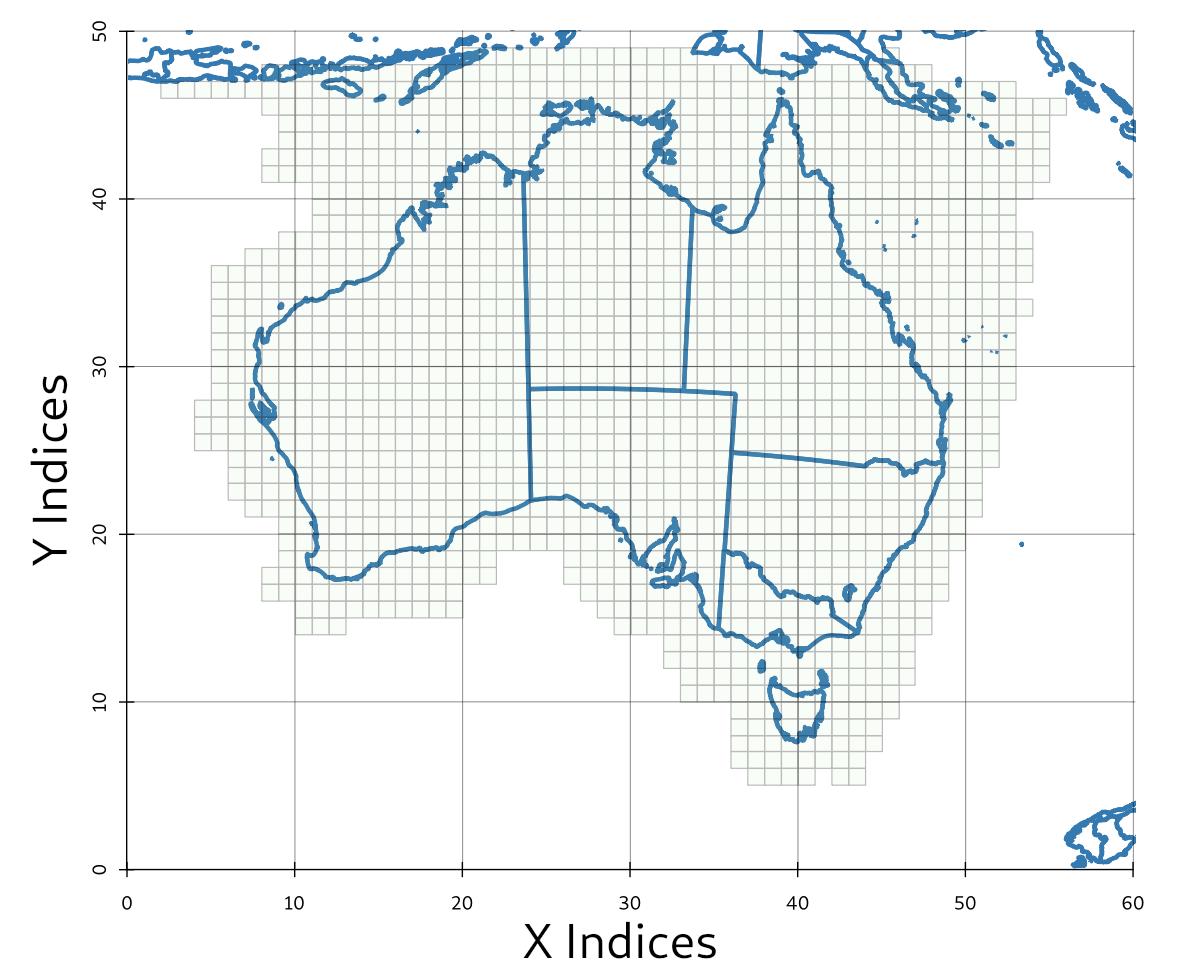DEA Summary Product Grid (Collection 3)
In this guide
Introduction
Digital Earth Australia (DEA) maintains and distributes collections of satellite-derived information sourced from a growing number of different satellite missions.
Previously, as part of DEA’s Landsat Collection 2, all Landsat Analysis Ready Data (ARD) was re-projected from native Universal Transverse Mercator (UTM) to Australia Albers (EPSG:3577) and tiled to a common \(100km^2\) grid. As a result, all products (single observations and statistical summaries), were published in a common projection and grid tiling scheme.
As part of DEA Landsat Collection 3, ARD and single-observation derivative products are now distributed in their native UTM projection in an effort to reduce:
complexity of our pipelines,
size on disk,
lossy re-projection of data from native coordinate reference system.
To make information across Australia comparable, continental-scale, statistical summary products are produced in a common grid based upon Australian Albers (Albers Collection 3 grid). This page describes how we developed this grid and how it differs from the previous Australian Albers grid (Albers Collection 2 grid).
How did we develop the new Collection 3 grid?
In developing this new grid, we had several goals:
be compatible with the new resolution of Landsat (\(30m^2\) from \(25m^2\))
be interoperable between both Landsat (\(30m^2\)) and Sentinel-2 (\(10m^2\), \(20m^2\) and \(60m^2\))
have a naming convention that was non-negative, removing the need for plus and minus symbols that can be problematic for some software applications
The tile size is defined as \(96km^2\). For Landsat, this will result in a raster size of \(3200 \times 3200 pixels\) of \(30m^2\). For Sentinel-2, this will result in a raster size of \(9600 \times 9600 pixels\) of \(10m^2\).
For compatibility with file system and web access tools and protocols, the grid has been defined to be non-negative, with the x00,y00 cell located in the South-Western corner of the grid, and positive numbers progressing Northward and Eastward.
The extent of this grid is based upon the maximal extents of:
GDA94 / Australian Albers projection coordinate reference system (EPSG:3577),
Digital Earth Australia’s Landsat Collection 3,
Digital Earth Australia’s Sentinel-2 Collection,
With a 3-cell buffer for future growth.
Shown here is an image of the new grid in EPSG:3577 projection, with tiles shown where we expect to have land imagery available:

How can I use this grid?
This tiling grid scheme has been used to subdivide processing and storage of our continental products.
This tiling grid can be used as an overlay in other spatial systems to determine the xMyN reference of a given area of interest from within a DEA Collection 3 summary product.
Unfortunately, there is no one-to-one mapping of the new Albers Collection 3 grid to the old Albers Collection 2 grid.
Shift in origin point
To accommodate an expanded area of coverage of Australia’s external territories, the DEA Summary Product Grid has being shifted. The south-west origin point of the grid has been being shifted from -5472000.0, -2688000.0 to -6912000.0, -4416000.0 (EPSG:3577). Therefore, all tile grid references have shifted 18 tiles west and 15 tiles south. For instance, a tile reference of x10y10 has changed to x28y25. For a preview, see the provisional version of the expanded DEA Summary Product Grid on DEA Maps. Download the new grid from AWS S3
The latest versions of all of our ‘summary derivative products’ have now been updated to the new origin point (but existing versions of the products were not be changed). The last product to be updated was DEA Land Cover in its version 2.0.0 release on 5 March 2025.